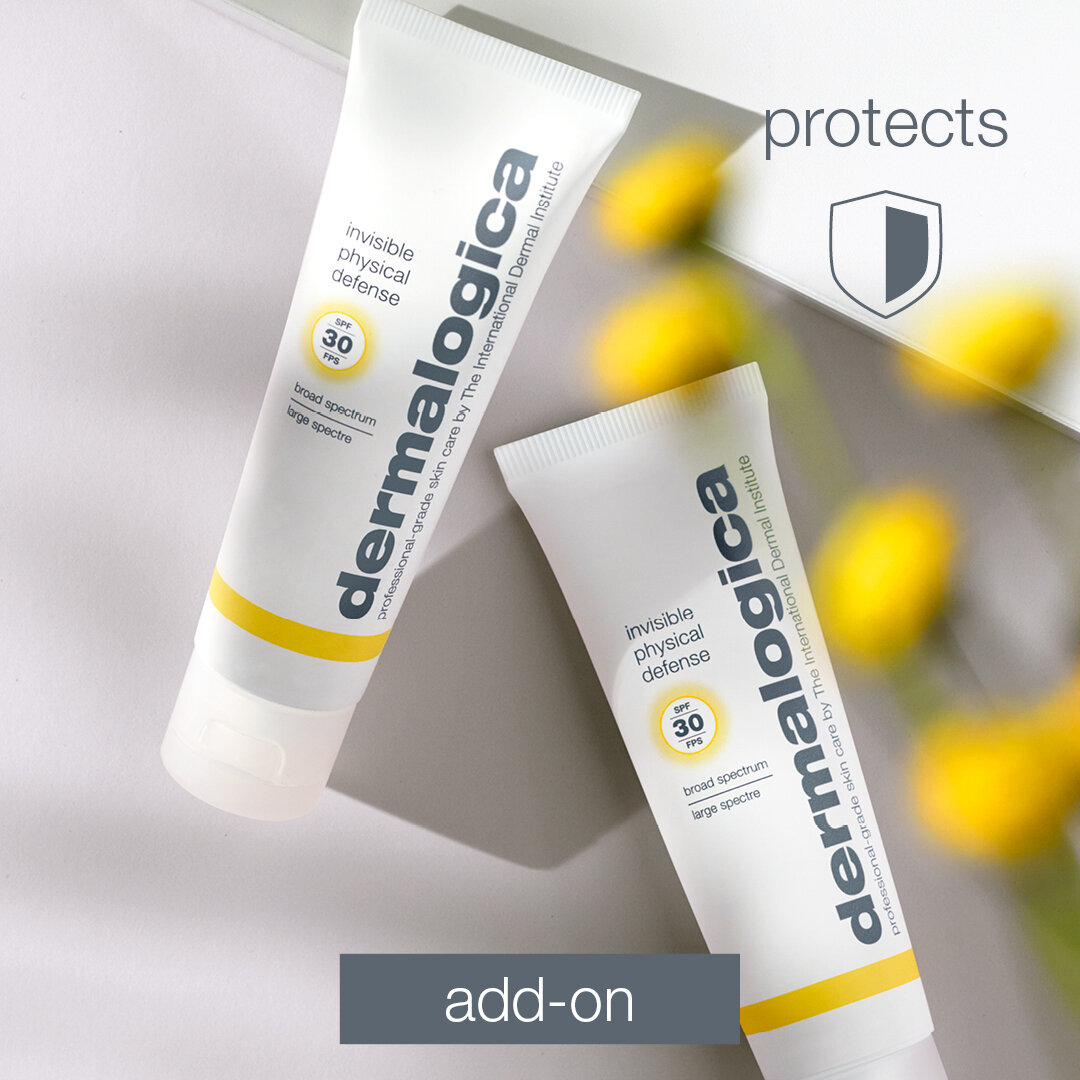Sun Protection factor - all you need to know….
What is Sun Protection factor - SPF - and why should we be using one? Why are cult skincare companies shouting about SPF and when exactly should I apply it?? Read on for everything you need to know about the most important skincare product you should own..
Should you wear an SPF all year round??
YES!! UV Rays can damage your skin come rain or shine! Your body is exposed to UV radiation every day, whether you're indoors or out. Sun damage doesn’t just happen during the summer months or while at the beach. Photo damage or UV exposure (which causes aging) can occur from exposure to daylight through clouds, rain, glass and even fluorescent indoor lighting. This is why protecting the skin every day is imperative. Roughly 90 percent of photo aging is preventable by wearing SPF daily, so slather up!
So a little bit about these damaging rays -
UVA - The “Ageing ray”, penetrates deep into the skin causing long lasting damage and it can penetrate through windows and glass and play a major part in accelerating the signs of skin aging and generating skin cancer
UVB - the “Burning rays” – the main cause of sunburn – reddens the skin
BLUE LIGHT - the blue light emitted by your cellphone and computer screens can not only make it harder to fall asleep at night, it could be damaging your skin, too. Blue light, the kind emitted from screens, is a type of high energy visible light, or HEV. While blue light is strongest from environmental sources like the sun, there are studies show electronic screens can have similar effects. Cosmetic dermatologist Kenneth Mark, who has practices in New York and Colorado, warned that blue light can “increase signs of aging, such as hyperpigmentation, collagen breakdown, redness, inflammation, swelling/odema and oxidative stress in the form of free radicals.” Broad spectrum SPF helps to protect against blue light also. IMAGE Skincares Prevention+ Hydrating Moisturizer (SPF 30) 95ml has now been reforumlated.The original formula has been updated with a new zinc oxide that rubs in seamlessly, leaving a sheer, weightless finish under makeup or on its own. Formulated with Digital Aging Defense, it helps to protect against blue light from phones, devices and the sun so its the perfect SPF to help filter blue light!!
Wear a MINIMUM SPF30 all year round to protect your skin from future damage, The higher the SPF the more, and longer, the protection.
SPF15 BLOCKS 93% UVB RAYS
SPF 30 BLOCKS 96% UVB RAYS
SPF 50 BLOCKS 98% UVB RAYS
UV light causes photoaging in the form of brown spots, coarse skin and wrinkles – even when you don’t get a sunburn. Exposure to sunlight triggers a cascade of skin-damaging effects, resulting in inflammation, production of reactive oxygen molecules that affect healthy cell growth, and stimulation of collagen-destroying enzymes.
Protect your skin from UVA, UVB, Pollutants and Blue light using the right SPF..
What do I need to know about SPF?
Not all sunscreens are equal. To find the best formula for you, pay attention to the labels, we will tell you more about what to look out for below….. but most importantly, wearing a generous amount daily helps protect your skin from premature signs of aging, as well as skin cancer.
Not all sunscreens protect against both UVA (aging) and UVB (burning) rays. Many people think that applying any old SPF will keep us safe from both kinds of the sun's harmful rays. Unfortunately, this is not true. To understand why, look closely at the labels, ingredients and physical forms of the products you are buying.
SPF (Sun Protection Factor) indicates how long it will take for UVB rays – the main cause of sunburn – to redden the skin. For example, SPF 15 means it will take 15 times longer for skin to redden with the product on than without it. This has nothing to do with UVA rays, which are the same rays emitted by tanning booths.
To protect your skin from both UVA and UVB rays, don't just buy a product with an SPF of 15 or higher. Make sure it is labeled "Broad Spectrum," which means it contains a combination of ingredients known to protect skin against both types of UV rays.
The IMAGE skincare range PREVENTION+ has a range of Broad Spectrum SPF as well as the Dermalogica Dynamic Skin Recovery SPF, Protection 50 Sport, Clearing Defence SPF30 Invisible Physical Defence and Prisma Protect.
These could be chemical or physical sunscreens or a combination thereof.
Chemical sunscreens (e.g., Avobenzone, Oxybenzone), work by absorbing ultraviolet (UV) radiation and converts it to heat. It is lightweight and blendable. Chemical exfoliants can sting and promote streaming eyes particularly if you have sensitive skin or are prone to allergies.
Physical sunscreens (e.g., Titanium Dioxide, Zinc Oxide), reflect or scatter UV radiation. They use Zinc Oxide and Titanium Dioxide which sits on top of the skin and reflects UV away. Best for sensitive skin… even babies!
Chemical or physical sunscreen? It's a matter of preference.
Chemical sunscreens absorb into the skin and are usually more popular because they feel lighter and look less noticeable. They use active ingredients like Avobenzone, Octinoxate, Oxybenzone and Helioplex.
Physical sunscreens, or mineral sunscreens, sit on the surface of the skin. They can feel heavier and look more noticeable, but they provide added coverage and are more resistant to sweating and swimming. Look for active ingredients like Zinc Oxide and Titanium Dioxide to identify them.
See some of our favourites below!
Oil Free and Helathy Glow - Prevention+ Matte SPF32
Sports, outdoor activities and high sun exposure, yet gentle enough for post-procedure skin
Glow enhancer - Prisma Protect SPF30
Protection 50 Sport - Face and body guard
Shine Free Solution - Clearing Defence SPF30
All skintypes and colours
How much Suncreen should I apply and when?
Sunscreen is always the last step in your skin regime so should be applied after your moisturiser and about 30 mins before sun exposure. You should reapply this regularly throughout the day or if you have come into contact with water.
When in doubt, apply more sunscreen.. Most people don’t apply nearly enough sunscreen. As a general rule, creams and lotions tend to deliver better protection than spray formulations, which most people don't apply enough of to get adequate coverage. The American Academy of Dermatology recommends a "liberal use" of SPF 30 (picture a shot glass full of lotion) for the body, and reapplying every two hours (or after swimming or exercising). For the face, the rule of thumb is one teaspoon of sunscreen to deliver the SPF protection on the package.
Here are some guidelines to staying safe and protected:
Use a tablespoon of SPF for your face and neck.
For body, apply enough to fill a shot glass.
Reapply every two hours when you’re out in the sun.
If possible, avoid direct sun from mid-morning to late afternoon, when the sun’s rays are strongest.
What damage can UV do and how do I prevent it?
We’ve all done it: paired too much time in the sun with too little sunscreen, ending the day with a red, sore sunburn. (Oops.)
You’re probably well aware that a sunburn equals skin damage, but let’s take a closer look at what that means – and what you should do next.
What exactly is a sunburn?
A sunburn is the skin’s response to ultraviolet (UV) exposure – and an indicator of severe damage.
Just 10 minutes of intense UV exposure can set skin’s defense system in motion, ultimately causing any of the following signs:
Redness – the body’s inflammatory response, resulting from dilation of blood vessel
Tightness – as the skin loses moisture and hydration
Tanning – as skin produces more melanin in an attempt to stop UV rays from penetrating through to deeper layers of the skin
Hypo- or hyperpigmentation – irregular light or dark patches resulting from extreme UV exposure
Forgot to reapply sunscreen? Don’t fret! The sun damage is already done, but soothing and hydrating sunburned skin can help prevent peeling and reduce redness. Hydrate irritated skin with a spritz of Multi-Active Toner (pro tip: keep it in the fridge for a cooling effect)!
Remember that skin is a great record keeper. Even if you can’t see the damage, UV exposure can cause skin cancer years down the road – so prevention truly is the best medicine… so get that SPF on your skin!!






